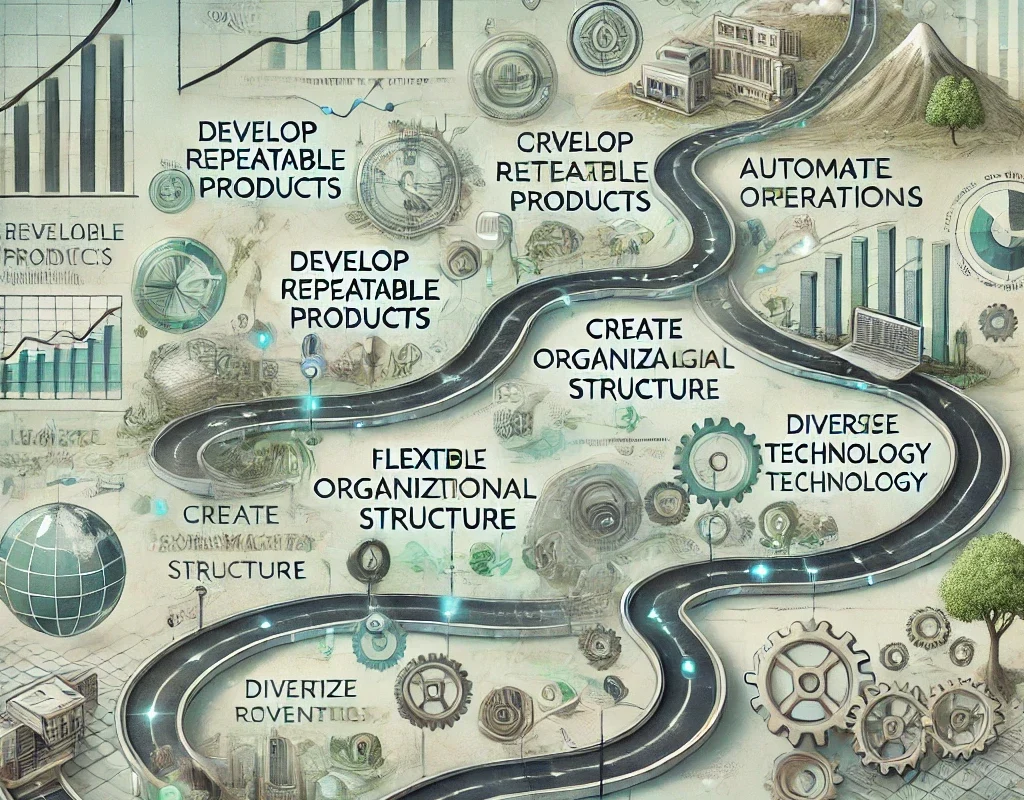In today’s dynamic business landscape, building a scalable business model is critical to ensuring long-term growth and success. As markets evolve and competition intensifies, companies that have the ability to expand their operations without compromising efficiency or profitability are better positioned to thrive. Scalability is about creating a structure that allows a business to grow exponentially while maintaining control over operations, resources, and costs. The key is to set a strong foundation that can support this growth in a sustainable manner.
The Importance of Building a Scalable Business Model for Growth
A scalable business model is more than just a strategy for growth—it is a blueprint for future success. It allows you to increase revenue while keeping operational costs under control, which is essential for long-term sustainability. Without scalability, businesses face significant challenges in expanding, from inefficient processes to skyrocketing costs, all of which can stifle growth. A well-thought-out scalable business model enables companies to grow at a pace that matches market opportunities while avoiding the pitfalls of rapid, unsustainable expansion.
Understanding Scalability in Business
What Makes a Business Scalable?
At its core, a scalable business is one that can grow without a corresponding increase in resource consumption. This means being able to add new customers, expand markets, or increase production without proportionally increasing costs or complexity. For a business to be scalable, it must have a streamlined operational model that allows it to handle increasing demand while maintaining quality and efficiency.
Scalability requires a balance between flexibility and stability. It involves creating systems that are robust enough to handle growth but adaptable enough to respond to changing market conditions. For example, a software-as-a-service (SaaS) company is often highly scalable because once the platform is built, it can onboard new customers with minimal incremental costs.
Scalability vs. Growth: Key Differences
While scalability and growth are often used interchangeably, they are not the same thing. Growth refers to an increase in revenue or market share, often driven by a corresponding increase in resources such as labor, technology, or capital. However, growth alone is not sustainable if it comes with exponentially rising costs.
Scalability, on the other hand, focuses on increasing revenue without a proportional increase in resource use. This allows businesses to grow more efficiently, ensuring that profit margins are maintained or even improved over time. Therefore, a business can grow without being scalable, but a truly scalable business is built for sustainable, long-term expansion.
Essential Components of a Scalable Business Model
Product or Service Offerings: Ensuring Repeatability
One of the first steps in building a scalable business model is to develop products or services that are repeatable and not dependent on customized solutions. Customization can be time-consuming and expensive, which can limit scalability. Standardizing offerings makes it easier to serve a larger customer base without a proportional increase in production costs or time.
For example, many companies find success by offering subscription-based services that provide consistent value to customers. This model ensures a predictable revenue stream while reducing the dependency on one-time sales. A repeatable product or service is key to scaling because it creates efficiencies in production and delivery, which are crucial for sustainable growth.
Building a Scalable Infrastructure
Infrastructure forms the backbone of any scalable business model. Whether it’s technology, logistics, or staffing, scalable infrastructure is essential for managing increased demand. Cloud-based systems, for example, allow companies to scale operations without the need for heavy investment in physical assets or in-house IT teams.
By investing in infrastructure that can grow alongside your business, you position yourself to respond quickly to new opportunities. Scalability in infrastructure ensures that as your customer base grows, your systems and processes can keep up, reducing bottlenecks and ensuring smooth operations.
Automating Operations for Efficiency
Automation plays a pivotal role in scalability. By automating routine and repetitive tasks, businesses can free up resources for more strategic activities. Automation reduces the potential for human error, speeds up processes, and allows for more consistent outcomes, all of which are essential for scaling.
From customer service chatbots to automated billing systems, businesses that implement automation can handle higher volumes of transactions or inquiries without the need to scale their workforce at the same rate. This improves operational efficiency and contributes to higher profit margins as the business grows.
Developing a Sustainable Revenue Stream
Recurring Revenue Models and Subscription Services
To ensure long-term growth, businesses need a sustainable and predictable revenue stream. Recurring revenue models, such as subscription services, offer a way to achieve this. By locking customers into long-term relationships, companies benefit from a steady income stream that can support future growth initiatives.
Subscription services have become popular in various industries, from software to e-commerce. This model provides businesses with greater financial stability, making it easier to scale operations and invest in growth opportunities without relying on unpredictable one-time sales.
Diversifying Income Streams
While focusing on one core product or service is essential for scalability, businesses should also explore ways to diversify their income streams. This reduces the risk of relying on a single revenue source and provides greater flexibility in navigating market shifts.
For instance, a company might offer complementary products or services, such as premium features, add-ons, or consulting services. Diversification not only enhances your business’s scalability but also broadens your market appeal, attracting a wider audience while reducing risk.
You can also read; How to Improve Customer Retention Using Data Analytics
Creating a Flexible Organizational Structure
Hiring Strategies for Long-Term Scalability
As your business grows, so will your team. However, scaling a workforce requires careful planning to ensure that new hires contribute to, rather than complicate, the growth process. One effective hiring strategy is to prioritize flexibility and versatility in your workforce. Look for employees who can wear multiple hats or adapt to different roles as the company evolves.
It’s also essential to implement clear structures for growth, so employees understand how they can progress within the company. A flexible organizational structure supports scalable growth by allowing for shifts in staffing needs without overburdening the company’s resources.
Empowering Leadership and Delegation
As a business scales, the ability to delegate becomes increasingly important. Founders and key leaders cannot manage every aspect of the business, and delegation is crucial to ensure that operations continue smoothly. Building a strong leadership team and empowering employees to make decisions helps create a more scalable structure.
A distributed leadership approach allows the business to remain agile and responsive to changes without overburdening a single individual or department. This fosters a culture of responsibility and innovation, key drivers of long-term scalability.



